Boer goat is a very common and popular meat goat breed in the United States and many other countries around the world. The breed is noted for its distinctive characteristics, coloration, size, color, weight and high meat production. It is among the top highly meat-productive goat breeds which originated from South Africa.
These goats are of a much bigger size than many other popular meat goat breeds. They also produce milk highly, but are mostly suitable for meat production. They are very popular among goat farmers mainly because of their fast growth rate, good quality and delicious meat, and also for their ability to adapt to different environments.
Boer goats are very beautiful with white bodies and brown heads. There are also some completely brown or white colored goats available. They have a pair of long and pendulous ears. They are among the very fast growing meat goat breeds and that’s why most of the farmers prefer them for commercial goat farming purposes.
Bear is a very popular meat goat breed mainly because of its fast growth rate, good quality and delicious meat, and also for its ability to adapt to different environments. However, read more information about this popular goat breed.
History and Origin Of Boer Goat
Boer goat has interesting history and origin. It was breed from the indigenous South African goats kept by the Namaqua, San, and Fooku tribes (with some crossing of Indian and European bloodlines being possible).
The breed was developed mainly for meat, and selective breeding over the years has led to it’s distinctive appearance and meat quality. It was bred also for it’s hardiness, fast growth rate, and adaptability to various climates.
The breed was first introduced to the United States in the early 1990s. And it gained popularity quickly among the farmers and ranchers mainly due to its superior meat quality and ability to thrive in diverse environments.
Characteristics
Boer goats have some special characteristics which have made them different from other goat breeds. They generally have distinctive brown heads and white bodies. Some goats can also be completely white or brown. They possess long, pendulous ears like the Nubian goats. They are very hardy and can adopt almost all types of weather and climate.
They are noted for having high fertility rates and for being fast growing and docile. As compared to other goat breeds, Boer does are reported to have superior mothering skills.
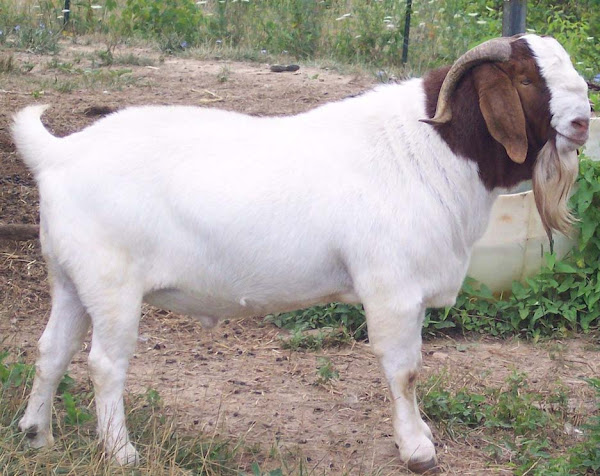
Height and weight
Average body height of the mature doe is typically around 71 cm, and the bucks are slightly larger than the does with an average body height of 76 inches at the shoulder. Usually mature Boer bucks weigh about 110 to 135 kg, and mature does typically weigh about 90 to 100 kg.
Dietary Requirements
Dietary requirements of Boer goats are same as many other domestic goat breeds. They usually love to eat leaves of trees, corns, green grasses and some other supplementary feeds. In commercial production, these goats require a balanced diet with the right mix of carbohydrates, protein, vitamins, and minerals to stay healthy and productive.
Show goats (which are very big in size) require huge amount of healthy and nutritious food. Be very careful in feed management for raising these goats. Good and nutritious food always ensures good health. So, always try to provide them sufficient amount of nutritious food and enough clean and fresh water as per their demand.
Reproduction/Breeding
Successful breeding is a very important part of successful goat farming business. Because proper and successful breeding ensures the quality of the offspring. Fortunately, Boer goats are naturally very good breeders, and they will breed easily if you keep good ratio of buck and does in your herd. Although, artificial insemination (AI breeding method) may also be used in some cases, especially for controlling breeding and improving genetic traits.
After a successful mating, the does become pregnant. The does have a gestation period of about five months (approximately 150 days). Boer does usually give birth to one or two kids per kidding (twins are more common).
Boer bucks are often used to crossbreed other goat breeds. Some most common and popular crosses are Boer with Spanish goats, Boer with Angora goats, Boer with Kiko goats, Boer with Nubian goats, Boer with Osmanabadi goats, Boer with Jamunapari goats and Boer with Sirohi goats. All of this crossbreeding produces new highly productive goat kids.
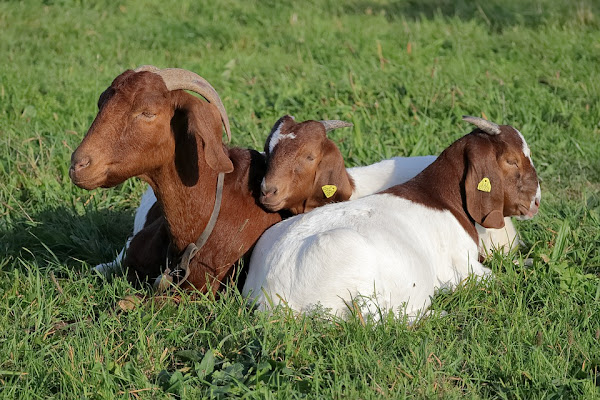
Behavior
Boer is naturally a friendly goat breed. They like to graze on grass and enjoy being outdoors. They are social and often prefer to live in groups. Boer bucks usually dominate the herd, and they are known as the herd sire.
Boer goats are also known for their curiosity and intelligence. They have tendency to explore their surroundings and are often seen browsing various plants and objects.
They are generally docile and its very easy to handle them. That’s why they are suitable for farm environments and raising as pets.
Lifespan
Average lifespan of Boer Goats typically ranges between 10 to 12 years. But it can vary depending on various factors such as genetics, nutrition, healthcare, and environmental conditions. If you take good care of your goats and feed them healthy and nutritious food, then these goats can live a long and healthy life.
Commercial Boer Goat Farming
Commercial Boer goat farming is a very profitable business. Meat of this goat is very tasty and nutritious, and has great demand in the market. So, starting a commercial production can be a great way for generating income.
Boer Goats for Show
Although Boer goats are raised commercially for their highly meat production. But they are also very popular and suitable for show purposes. Big sized Boer goats are raised for show. This type of goats need special care, feeding, housing, and other management.

Uses
Boer goats are mainly popular and used for meat production. They are well-known for their tender and flavorful meat, which has high demand and value throughout the world.
Price
Its not possible to tell the exact price of these goats, because it depends on numerous factors and can vary from place to place. But, generally the Boer kids tend to be less expensive than mature adults. Prices for healthy Boer kids may range from $100 to $300 or more per head, depending on the specific qualities of the animal and also depending on your location.
Mature Boer goats (especially does with proven breeding records and bucks with desirable genetics for breeding purposes) can command higher prices. Prices for mature Boer goats may vary from $200 to $1,000 or more per head.
Special Notes
Boer goats require some special caring and other management. Follow the tips mentioned below raising and care of these goats. Newborn Boer kids require special caring. Set up a daily schedule to take care of the new kids and their mother. Vaccinate the kids to prevent them from virus and diseases.

Enure their house/shelter is free from harmful predators. Their housing system should be suitable and comfortable enough for them. Build their house in a higher place. This will keep the house dry always. Always keep a water pot filled with clean and fresh water in front of the goat. Try to feed the goat enough fresh and green grasses. It will be better if you can manage a grazing place for your goats near your farm. Review full breed profile of the Boer goat in the following table.
| Breed Name | Boer | |
| Other Name | Africander, Afrikaner, South African common goat | |
| Breed Purpose | Mainly kept for meat production | |
| Breed Size | Large | |
| Buck | About 110 to 135 kg | |
| Doe | About 90 to 100 kg | |
| Horns | Yes | |
| Climate Tolerance | All Climates | |
| Coat Color | Mainly white with brown heads | |
| Good for Stall Fed | Yes | |
| Rarity | Common | |
| Country/Place of Origin | South Africa |
Frequently Asked Questions (FAQs)
People ask many questions about Boer goats. Here we are trying to list the most common questions about this fantastic and popular goat breed, and trying to answer them. Hope you will find your answer. Don’t hesitate to ask us if you have more questions.
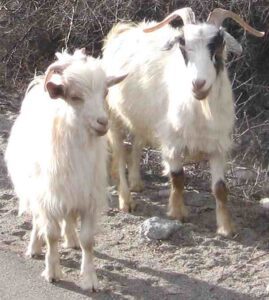
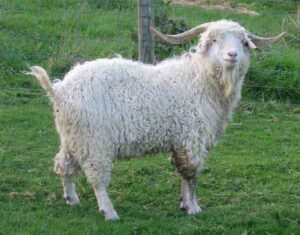
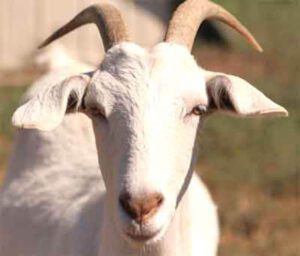
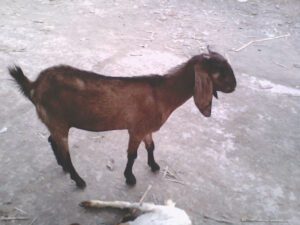

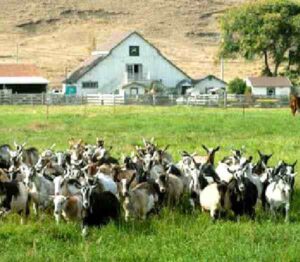
I’ve gone throug all the guidelines, but how do I get boar breeds